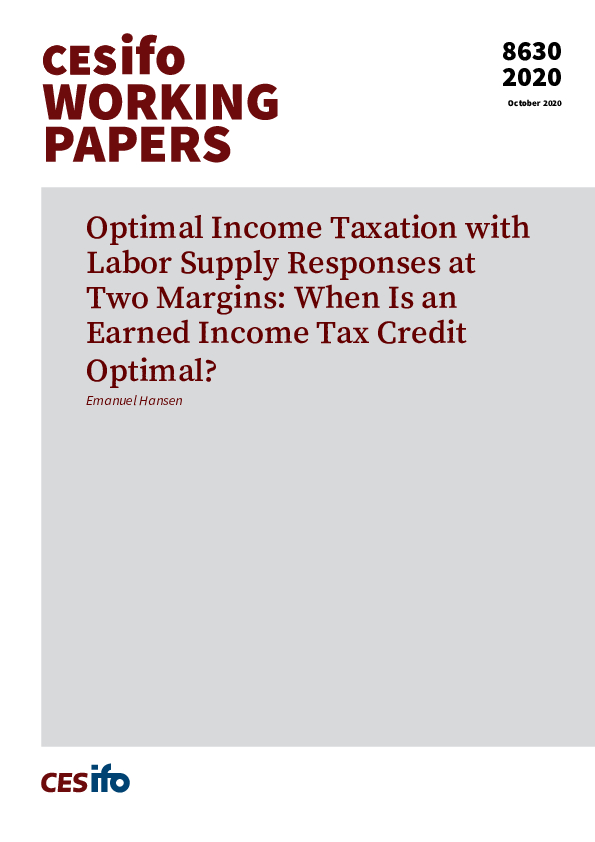Optimal Income Taxation with Labor Supply Responses at Two Margins: When Is an Earned Income Tax Credit Optimal?
CESifo, Munich, 2020
CESifo Working Paper No. 8630

This paper studies optimal non-linear income taxation in a model with labor supply responses at the intensive (hours, effort) and extensive (participation) margins. It shows that an Earned Income Tax Credit (EITC) with negative marginal taxes and negative participation taxes at the bottom is optimal if, first, semi-elasticities of participation are decreasing along the income distribution and, second, social concerns for redistribution from the poor to the very poor are sufficiently weak. This result is driven by a previously neglected trade-off between distortions at the intensive margin and distortions at the extensive margin, i.e., between two aspects of efficiency. Numerical simulations suggest that a strong expansion of the EITC for childless singles in the US could be welfare-increasing.
Public Finance
Labour Markets